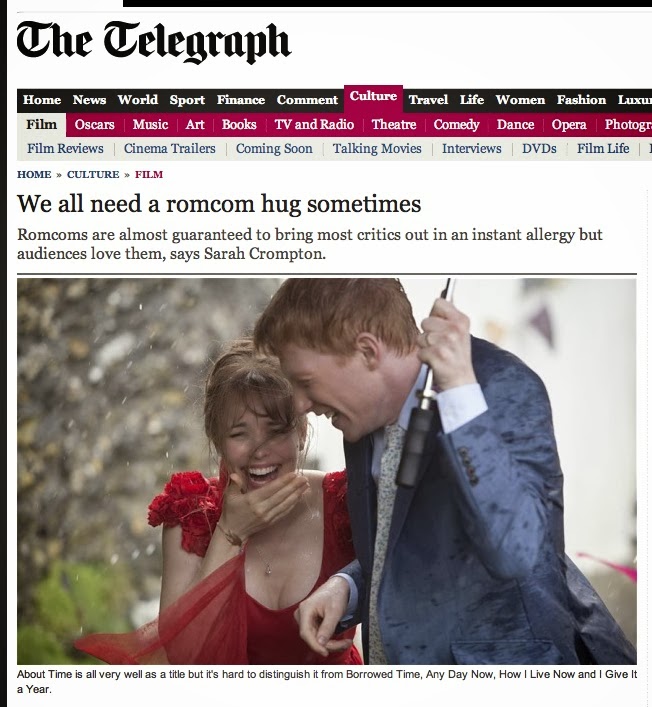Our film, Party Off!, is a romantic comedy it takes
inspiration from many different romantic comedies, including Love Actually and
Bridget Jones: Edge of Reason. We have taken guidance from both these films and
also from the narrative theories that we have looked at; throughout our film
and its opening these narrative themes will be set up.
Narrative Enigma:
In our film we plan to use narrative enigma. We hope to
be able to keep the look of the main character a secret. In order to do this,
but still make sure it is clear that she is the main character we will have her
voice first, as the voice over. When we do introduce her we will show her
coming back up after clearly being sick, we plan to have her look as
unglamorous as we can, by having her cry before hand and have her mascara running,
to make this obvious.
This choice was made after reflecting upon the opening
sequence of Bridget Jones: Edge of Reason. In this one of the early shots of
Bridget, who has previously been set up as the main character, is of her about
to jump out of a plane. We thought through what the director was creating with
this shot and figured that it was to establish some form of relate-ability
between the character and the audience, the fact that Bridget is no seen as
glamorous all the time makes her, as a character, more relatable.
Todorov’s Structure:
We will follow Todorov’s narrative structure, but not
strictly. We will create the starting equilibrium through the scrapbook,
showing the happy times before the start of the film and, through the
scrapbook, we will move towards the disequilibrium. By having a pre-established
equilibrium that is only touched upon through the starting sequence we are
somewhat mirroring Love Actually. The characters in Love Actually have a back
story proceeding the events of the start of the movie; we pick this up through
the start of the opening and throughout the film. By having the equilibrium
pre-established we save time in the opening, meaning we can include more
content within it.
Propp’s Archetypes:
We do not have many of Propp’s character archetypes. This
is because, throughout the examples we have looked at and through our research
we have not seen many examples where a Romantic Comedy contained these
characters.
The link that we have been able to make, however, to
Propp’s archetypes is between the main character, which we have seen is
comparable to the hero, mainly because they commonly get the prize/prince/princess.
We have also found a comparison to the villain, a commonly occurring character
that often tries to steal the prize, they are also somewhat comparable to the
false hero. Finally, we have found links to the helper, we originally thought
that they could be the friends. We have not been able to find links to the
donor or dispatcher.
Binary Opposition:
The most common and obvious binary opposition that we
have seen is between the main character and their love interest. In all our
examples and almost all Romantic Comedies the two are male and female. There
are not many other binaries that we have noticed.













